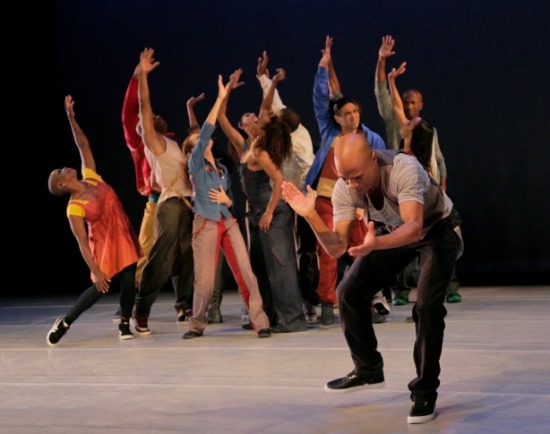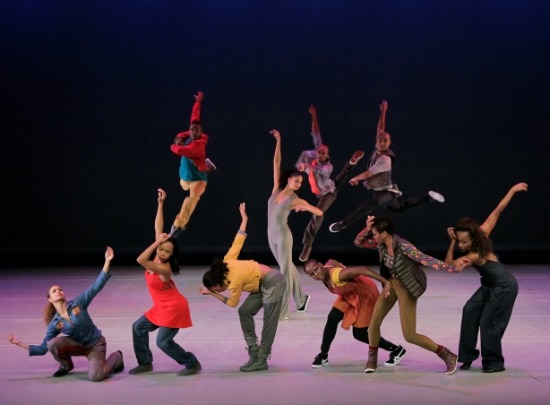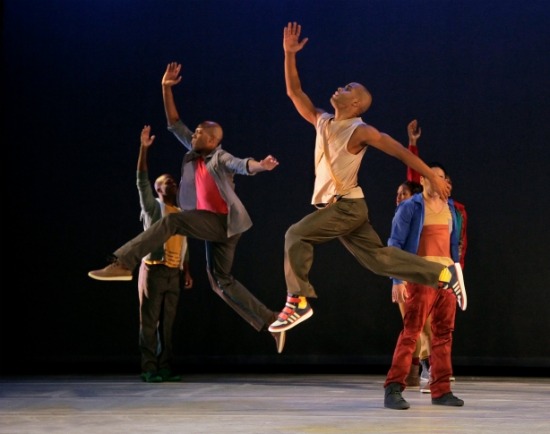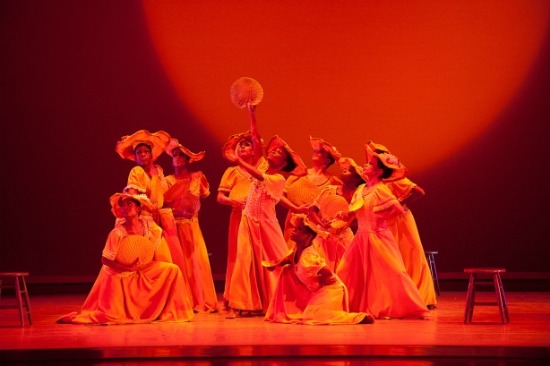What do we crave from the thirty dancers who make up the Alvin Ailey American Dance Company? That they be gorgeous, sleek, limber, powerful, virtuosic—sassy when the choreography calls for it, soulful ditto. They do not stint. They can knock dancing into the stratosphere or into our laps. Sometimes they turn the wattage up too high—forgoing subtleties for the highest, the biggest, the baddest, the most heartfelt.
Last July, when Judith Jamison retired, Robert Battle took over as artistic director of AAADC. A member of David Parsons’s company before starting his own Battleworks Dance Company, he had already set his The Hunt on the Ailey men (that and his Takademe, along with repertory favorites, will be performed in the AADC’s annual season at City Center, which runs through January 1.) It’s encouraging that the dancers are also mastering pieces that should stretch them in new ways: Paul Taylor’s Arden Court, Ohad Naharin’s Minus 16, and Home by Rennie Harris.
Home premiered on December 1, the night after the company’s opening gala. It came laden with tributes. World AIDS Day is celebrated on December 1, and Ailey died of AIDS on that day twenty-two years ago. Bristol-Myers Squibb sponsored a contest, “Fight HIV Your Way,” calling for stories submitted by people living with HIV or affected by it. Supposedly Harris’s work was inspired by these tales, and the ten winners were flown in to see the premiere.
You will not, however, find any touching stories in Home, which is, to my mind, just as well. It can be moving enough to see wonderful-looking, vigorous young people dancing to beat the band—not showing off for us, but making us feel what a challenge and a joyful release dancing can be for those doing it. True, the beginning and the end of Home hint at a community and an outsider who is both born from it and returns to it, but Harris doesn’t belabor themes of isolation or difference. His roots and his art—body, mind, and soul—flourish in hip-hop. For Home, he (aided by assistant choreographer Nina Flagg) takes steps born on the streets and in clubs and subjects them to formal strategies and variations that make them shine in new ways.
The stage fills, empties, and refills with 13 swarming Ailey dancers plus the wonderful Matthew Rushing (returning as a guest artist). They’re wearing hip, bright-colored everyday clothes by Jon Taylor—shirts, tee shirts, pants, jackets, dresses—in various enlightened combinations. The music by DJ-remix artist Dennis Ferrer and multi-talented Raphael Xavier (who used to dance with Rennie Harris Puremovement) sets up the kind of party that gets feet moving. The Aileyites have done their best to adapt to the loose but precise moves that Harris has given them. The space is awash with people hopping low, pedaling one-legged on air, skidding and scuffing their feet in intricate ways; sometimes you could believe they’re dancing on thin ice, their limbs, bodies, and heads in lubricated dissent. There are some cartwheels, as I remember, or dancers diving to take the weight on one hand. No heavy-duty b-boying. No vying with one another for our attention. No facing front all the time. In other words, smart choreography.
Sometimes everyone’s into his/her own thing, but often cadres work in counterpoint, intent on their actions. The rhythms are lively: the performers go at it fast and steady, stop dead, whack out some gestures, ooze into a suspended moment and pause before plunging back into heated activity. Instead of legs kicking high, you get pumping knees and hips. The terrific Rushing dances like a complex, well-oiled machine with an abundance of moving parts; he shrugs in and out of steps as if they were much-loved old clothes. Your eye snags on one person, then another. Here’s Hope Boykin in a crazy outfit (orange jumper over yellow blouse and black leggings) bombing into motion, tall Alicia Graf Mack of the sensational long legs forgoing some of her ballerina chops. Antonio Douthit! Michael Jackson, Jr.! All the familiar Ailey dancers looking liberated—trying to hold their own in an unfamiliar club and having a whale of a time doing it.
The entire December 1 program had the air of an homage. It opened with ex-Ailey dancer Christopher Huggins’s Anointed (new last season), although without program notes, how was everybody supposed to know that the go-for-broke dancing celebrated Ailey (Glenn Allen Sims) passing the torch to Jamison (Linda Celeste Sims) and, after a while, Jamison yielding to Battle (a hopeful looking Daniel Harder)? G.A. Sims lifting his wonderfully expressive wife over and over and over can (with some effort) be construed as Ailey inspiring and elevating Jamison, but, at its choreographic little heart, it’s a virtuosic pas de deux.
And the closer? What else in the repertory commemorates the Ailey spirit better than his perennially show-stopping Revelations? Ailey’s great early works, it and Blues Suite, are simple compared with his later pieces and those that other choreographers contribute to the repertory. Over the years, however, Rev has become a blockbuster—irresistible in the high-stepping, down-home vigor of “Rocka My Soul;” atheists—clapping along, and shouting out—may, for a few minutes, find themselves in Abraham’s bosom, wherever that is, and happy to be there. The purity of this 1960 work remains—to be discovered or ignored by generations of performers.
Certain decorations that creep into Revelations affect some of us the way a serious grammatical error does a lover of language. In the opening “I Been ’Buked,” there’s a moment when all the dancers burst into different actions within a loose cluster. In the middle of the group, a woman reaches out to a kneeling man, one of her legs stretched behind her in what modern dancers used to call a “back extension” rather than an arabesque. Usually you barely notice this; it’s just one element in a complex image. But when Graf Mack (whom I’m delighted to see back in the company) automatically lifts her leg so high that her skirt slides down and bares her thigh, your eyes inevitably focus on that shapely flag thrust up above the group, practically demanding the pledge of applause.
I’ve complained in the past about subtleties and sincerities that have departed from Revelations over the decades. But on the night I saw it last week, Matthew Rushing in “I Wanna Be Ready” lit a slow-burning fire. Deeply felt, honest to the bone, alert to small shifts in the solo’s dynamics of hope and struggle, his performance took me back to Revelation’s origins. It was also a great pleasure to see Clifton Brown (another alum returning as a guest artist) in “You May Run On” and “Rocka My Soul.” It’s not just that he’s a terrific dancer and a great-looking man, but that he appeared utterly at home, unforced, cool to the max—but alive to his friends and to the spirit that moves them all.





I wish I could see Matthew Rushing dance “I wanna be ready”–my favorite solo in Revelations. The last time the company was here in Portland, the performnce of Rev looked as canned as the music sounded, I fear. It will be interesting to see how Mr. Battle and the company evolve and the dancers as well. What I have loved about this company in the past is the joy they find in the dancing–let’s hope that joy doesn’t get updated out of existence.